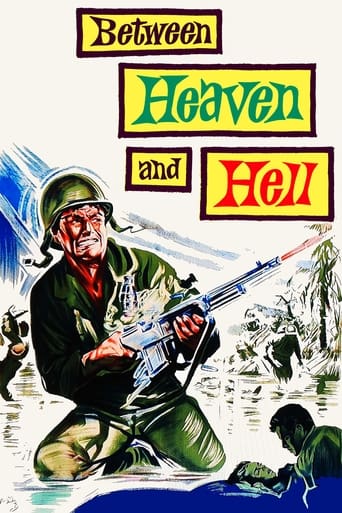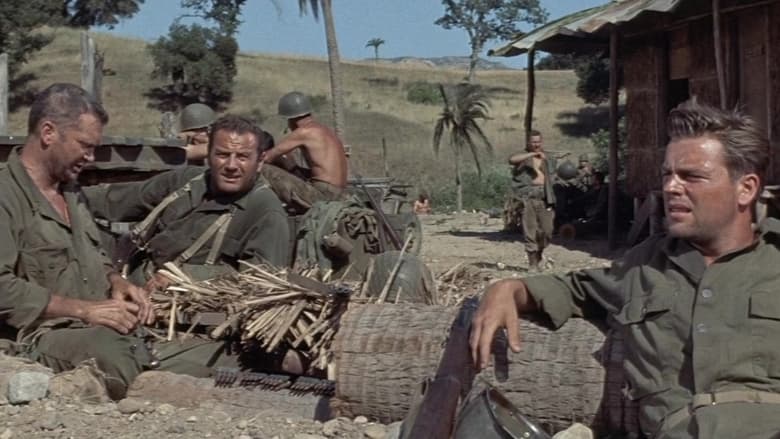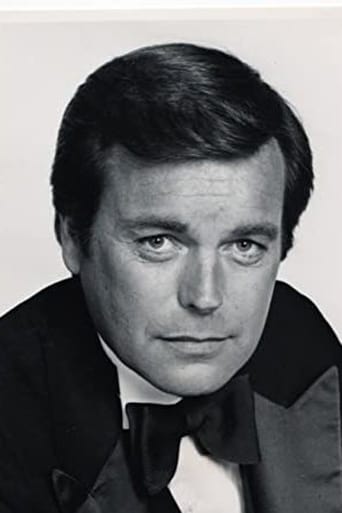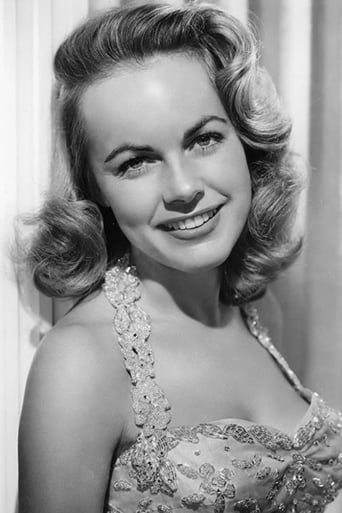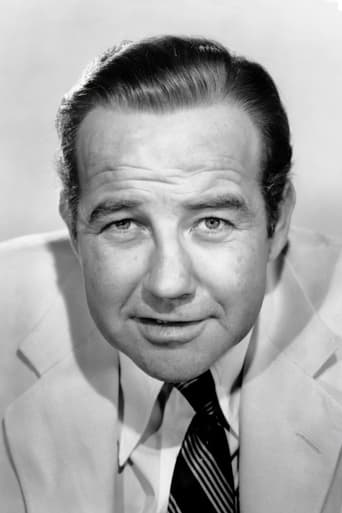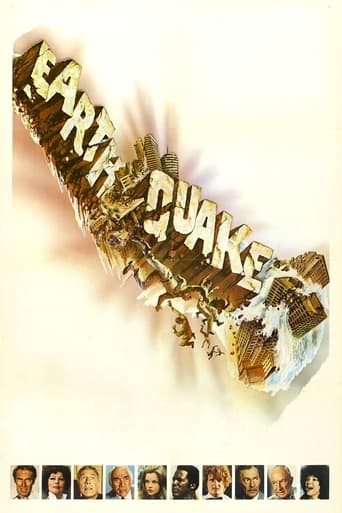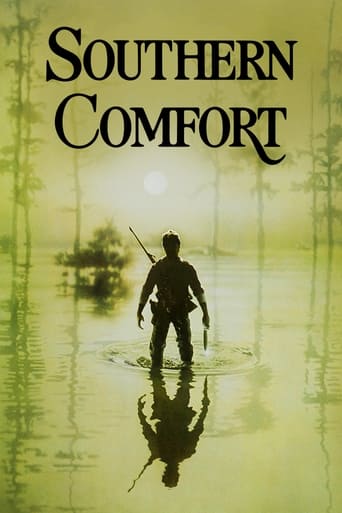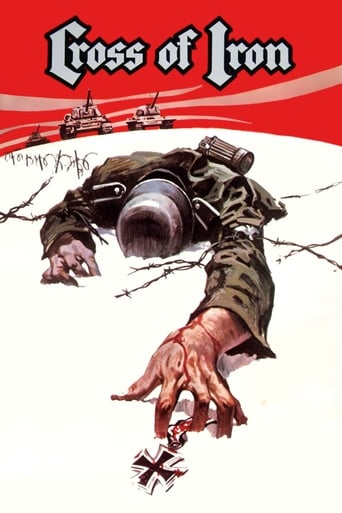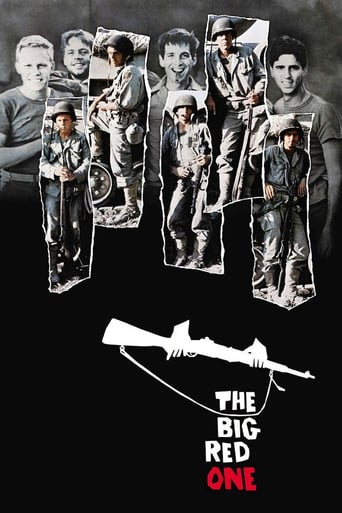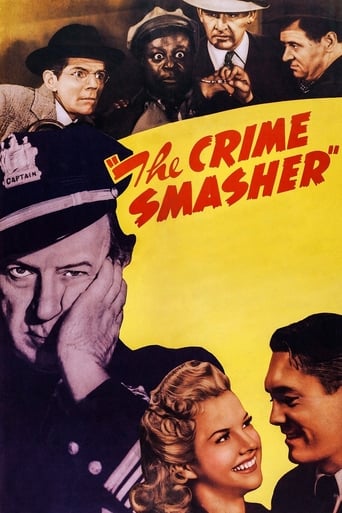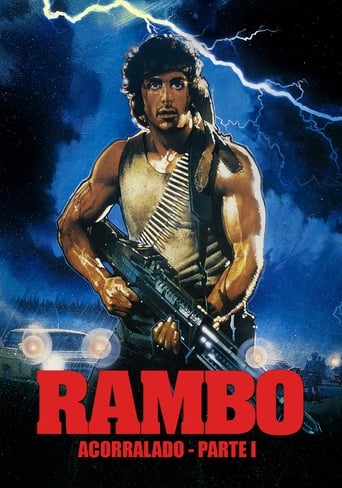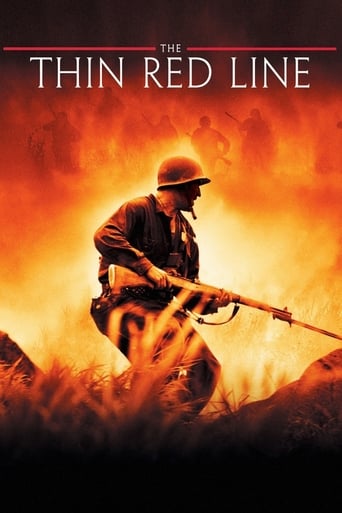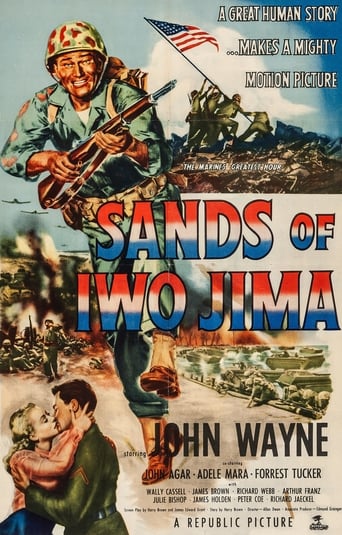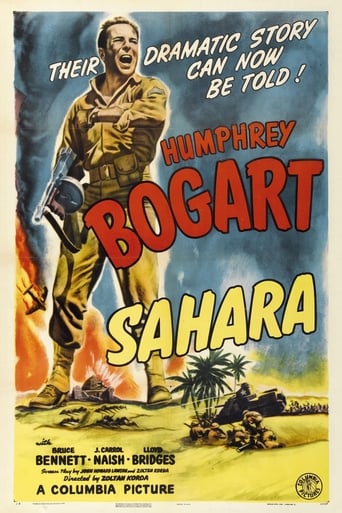Between Heaven and Hell (1956)
Sam Gifford remembers : In prewar years he was an arrogant southern cotton plantation owner, married to the daughter of a colonel. At the beginning of the war he was mobilized with his National Guard unit as a sergeant. Came the day when, revolted by the cowardice of his lieutenant, who had fired at his own men, he hit him. Downgraded, he was sent to a disciplinary battalion. Sam now discovers his new detachment, his new commanding officer, just another cowardly brute, Captain Waco Grimes. While in combat, Sam will gradually become closer to the privates, working-class people he used to despise. He will become another man, a better man.
Watch Trailer
Cast


Similar titles
Reviews
Good movie but grossly overrated
I am only giving this movie a 1 for the great cast, though I can't imagine what any of them were thinking. This movie was horrible
The movie's not perfect, but it sticks the landing of its message. It was engaging - thrilling at times - and I personally thought it was a great time.
The film never slows down or bores, plunging from one harrowing sequence to the next.
Copyright 1956 by 20th Century-Fox Film Corp. New York opening at Loew's State: 11 October 1956. U.S. release: October 1956. U.K. release: 4 February 1957. Australian release: 28 February 1957. Sydney opening at the Regent. 8,421 feet. 94 minutes.SYNOPSIS: A somewhat prejudiced and standoffish Young Southerner finds true comradeship in the U.S. Army.COMMENT: Fox's 64th CinemaScope feature is somewhat disappointing. The novel has undergone several important and basic changes for the screen which have considerably weakened its vitality, its originality and its moral theme. It was Gwaltney's contention that war, despite and because of its horror and brutality, could do some good on the individual level, namely it could awaken a social conscience and an awareness in a previously selfish person who lived only for himself (shades of "The Best Years of Our Lives"). But this all-important theme has been completely dropped from the film, whereas the war scenes themselves (which now have no reason for existence other than one-dimensional shoot-em-up heroics) have been retained. Aside from Crawford's powerful performance as the neurotic Grimes, the film has little to offer beyond the competently routine and mediocre conventional.
I expect this 1956 war movie was passed over by critics because its star, Robert Wagner, was considered just another light-weight pretty boy of the day. Nonetheless, the movie is better than just another celebrity vehicle, while Wagner is a much better actor than his good-looks suggest, and, I think, time has proved.Two features distinguish this film from others of the day. First is the subplot of tenant farmers and the class barrier separating them from the land owners they work for. A number of pre-Vietnam movies dealt with racial differences in the military; this is the only one I know of dealing with white Southern sharecroppers and their difficulties. Wagner's unit is a National Guard battalion which means that the unit is made up of men from the same locale with the same class distinctions of civilian life carried over into the ranks of the unit itself. Thus, Robert Keith a patriarchal rich man in civilian life is in similar command of the battalion as the colonel, while Tod Andrew's land owner heads up a platoon as a lieutenant. In short, land owners make up the ranks of commissioned officers, while share-croppers make up the enlisted ranks.Now, the screenplay departs from this logic in Wagner's case. Though a land owner, he's not an officer; instead he's a sergeant in the enlisted ranks. The reason I think is pretty clear. Officers do not fraternize with enlisted men. But for the plot to deliver its main message, it must break down the social barrier between tenant farmer Buddy Ebsen and land owner Wagner, and that requires that they fraternize. Hence, the screenplay makes Wagner an enlisted man. But this curious departure is for a good cause. Only by getting to know a man (Ebsen) personally can the haughty Wagner overcome the cruelty he has shown his share- croppers in civilian life. The lesson here is similar to that of racially inspired filmsit's personal contact that ultimately humanizes and breaks down social barriers. Thus, once the social distance is overcome, the two can become friends and equals and be carried off to the same hospital ship, side-by-side. A humane message, well delivered.The second feature is perceptively pointed out by Kayaker36. There's an unmistakable homosexual subtext to Broderick Crawford's command center scenes. Today, that wouldn't merit much mention, but remember this is 1956 when about the only thing worse than being a gay was being a communist. And to even hint that gays might be in the militaryand in a position of commandis really quite remarkable. The screenplay is adapted from a novel, and I suspect the idea comes from the novel and was rather boldly adapted into the screenplay. But, whatever the source or reason, this is the only war film of the post-war era I know of to even hint at that forbidden topic.Anyway, the movie is well produced by TCF, with just enough battle scenes to satisfy war- movie fans. The screenplay is also unusual in its depiction of death by friendly fire, a much more common occurrence among soldiers than movies led us to believe. On the other hand, note how, in passing, the script works in a love interest for Wagner so that Terry Moore's name could go up on the marquee and broaden audience appeal. Note too, how Crawford gets a rather lengthy and unnecessarily histrionic scene to justify, I suppose, his starring credit. Remember, he was only a few years past his Best Actor Oscar, at a time when his name still carried audience weight. Actually, combining this film with Tony Curtis's 1954 war movie Beachhead would make a revealing double-feature, showing again how slick and entertaining films from Hollywood's studio period could be. This may not rank with the best or most suspenseful war films of the period. But it does remain an interesting oddity.
The location of what's directly Between Heaven and Hell is the Pacific Theater during World War II. Robert Wagner, recently a sergeant, but busted down for striking an officer, gets himself transferred to a new outfit. He's now in a company in a forward position on a remote Pacific Island where the outcome is still in doubt. There's one crazy captain in charge played by Broderick Crawford. He's a bit combat happy to say the least.Wagner was a spoiled rich kid who married the boss's daughter, Terry Moore, and he's pretty hard on the sharecroppers he manages. That all changes for Wagner during his service in the Pacific where his national guard outfit is now serving and he's with a lot of these same people and his life depends on them and they, him. He gets to reevaluate a whole lot of what he had believed before.Between Heaven and Hell is a no compromising look at the Pacific War and the men who fought it. Wagner does well in the lead role, but acting honors go to Broderick Crawford as the captain who's bucking for a section 8. When he does get relieved, note the interesting suicide by sniper scenario he sets up for himself. Also Buddy Ebsen plays a very similar role to the one he played in Attack which also came out in the same year. Ebsen plays one of the sharecroppers who Wagner previously looked down on. Ebsen was staging something of a comeback himself, he would soon be cast in Walt Disney's Davy Crockett and then in The Beverly Hillbillies. Some of those comic parts make us forget what a fine dramatic actor Ebsen could be. He just wasn't given the chance often enough.For those who like their war pictures with a minimum of flag waving, Between Heaven and Hell is definitely for you.
Composer Hugo Friedhofer, Oscar winner for The Best Years Of Our Lives(1946) turns in one of his finest scores in this unpretentious war film with a surprisingly focused performance by Robert Wagner. This, along with A Kiss Before Dying (also 1956) represents the best work Wagner did while a contract player at Fox. The music score uses the old "Dies Irae" motif to excellent effect, and Friedhofer's ingeneous way of rephrasing and reharmonizing this simple chant earned him a well deserved Oscar nomination. This story also addresses some issues like friendly fire, in the war scenes and issues of class and privilege on the home front.The dramatic tension created by the contrast between the battlefield and flashbacks to the Wagner character's home life is stunningly reflected by the music. They just don't write scores like this anymore, and they don't make unpretentious war movies anymore. Nowdays, everything has to be an $200 million spectacle.This film, with it's great supporting cast that includes Buddy Ebsen, Harvey Lembeck, LQ Jones and Brad Dexter, reflects what was good about the old studio system.Fox made these kind of movies better than any other studio- also check out The Desert Rats (1953). In Love And War( 1957) and The Young Lions (1958) are both great Friedhofer scores; then there'sZanuck's masterpiece, The Longest Day (1962) also starring Robert Wagner.This score represents Hugo Friedhofer at the height of his creative powers at a time when his work at Fox was very prolific. His last major score was One-Eyed Jacks (1961) and he is largely a forgotten figure today.

